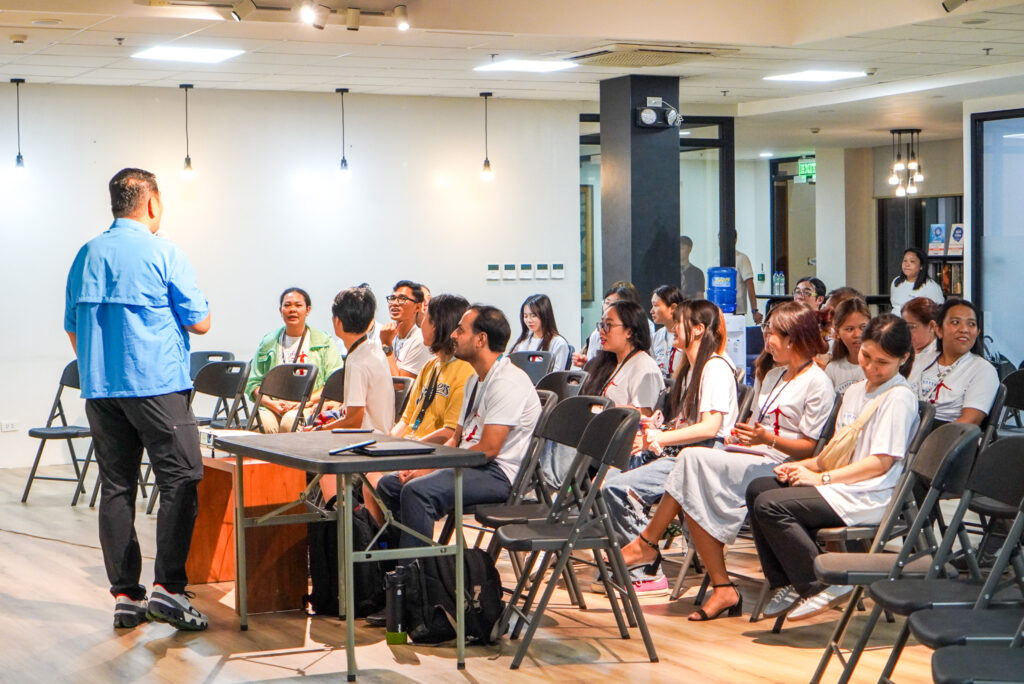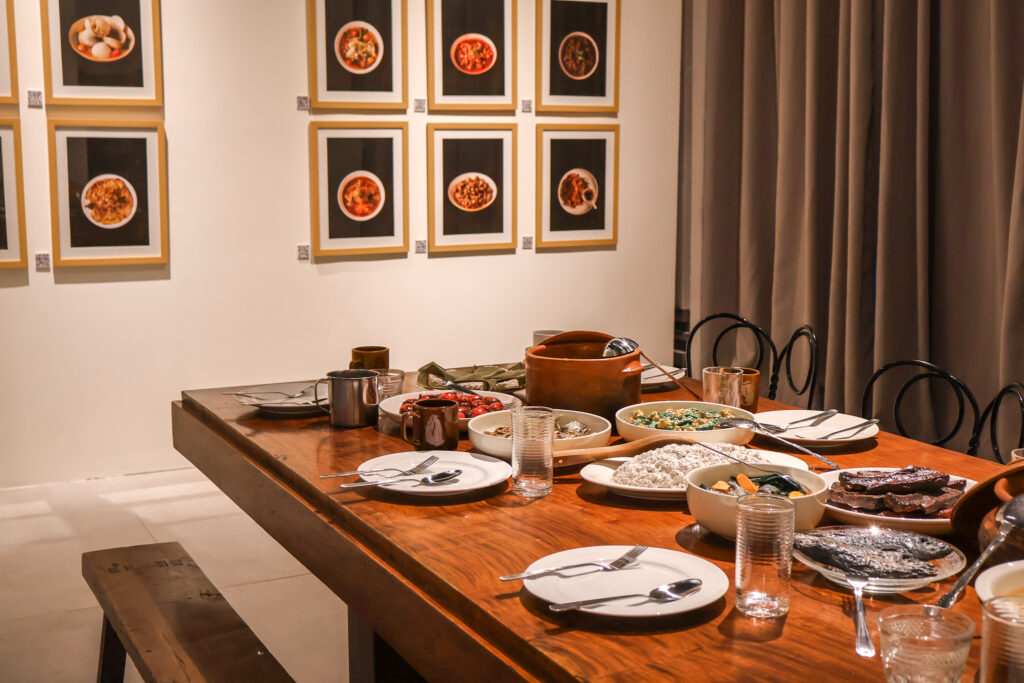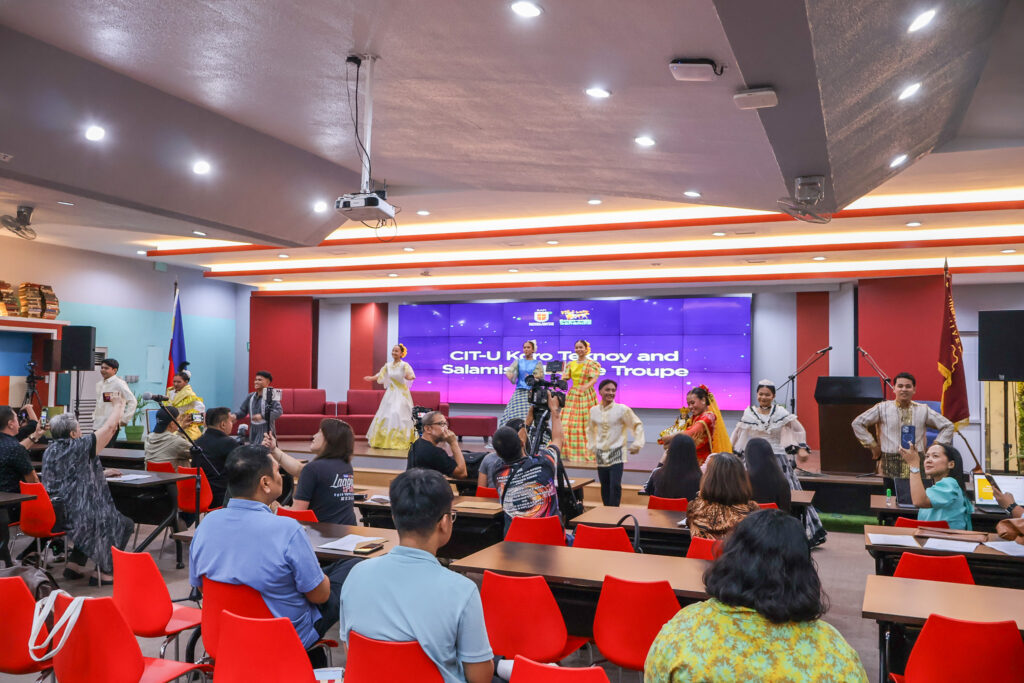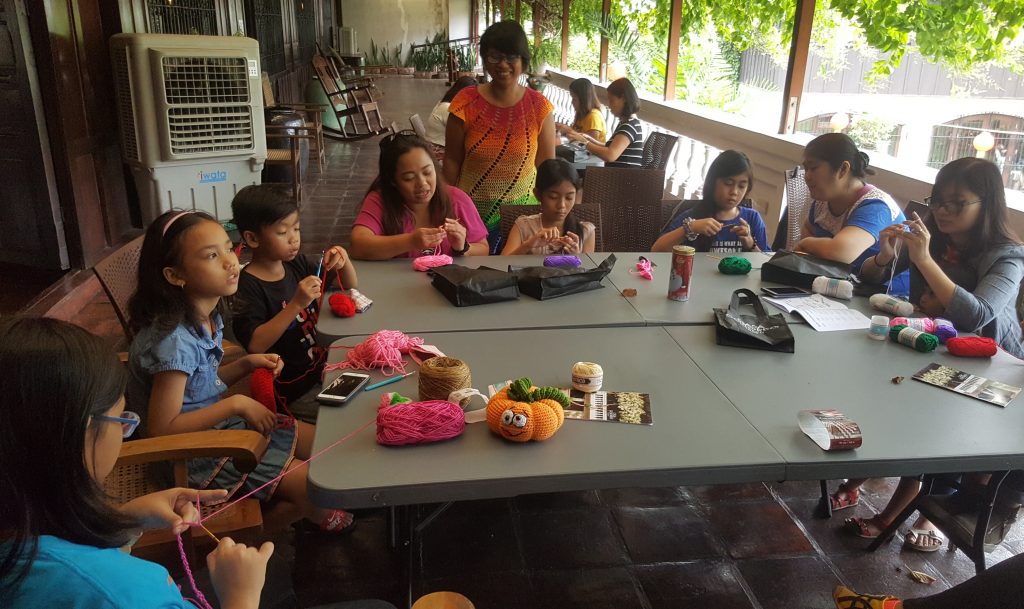
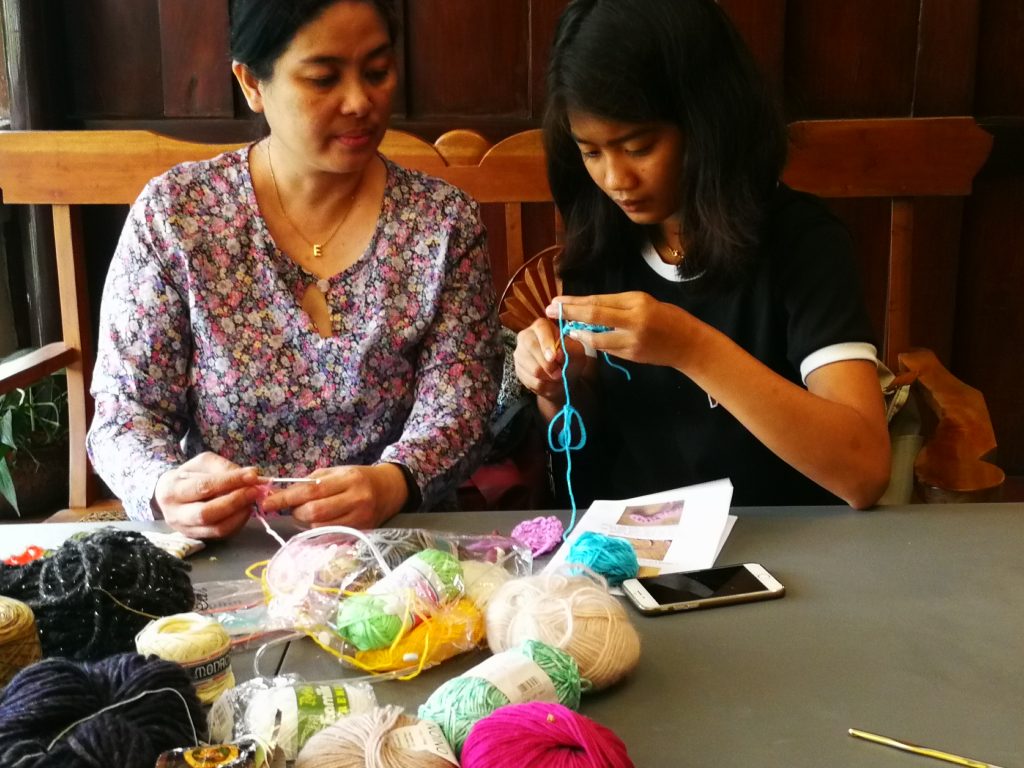
Previous
Next
“When you crochet for someone, you give her a piece of yourself,” said Sarah Palmares who led a bevy of women during the “Ganchillo at the Azotea” workshop at the Casa Gorordo Museum of the Ramon Aboitiz Foundation Inc. (RAFI-CGM) last Feb. 3, 2018. “You actually hold every strand of the yarn in each of your creation.”
By demonstrating the weaving and presenting a few samples, she introduced the basic crochet (or ganchillo) stitches. There are two common ways of holding the crochet hook: the pencil and the grip style.
The chain stitch involves the overlapping of the strand through a hook. The slip stitch is entwined in two loops while the half double is completed by pulling up three loops in one hook. Loop counts vary according to the desired pattern, especially in more complex stitches, such as the double crochet, treble crochet, and double treble crochet.
“In the early 1900s, crochet was taught in home economics classes in public schools in Cebu. The craft was introduced to Cebu by the Spaniards,” she said.
She said that our ancestors were limited to stitching doilies, table and bed covers, and drapes using fine cotton hook and cotton yarn based on printed patterns from books. For her, however, it is the process of making fabric out of rolls of yarns, compared to sewing which is based on ready-made materials.
“Ganchillo now has evolved into a very versatile craft. It is purely handmade, unlike knitting which is done by machines. Crochet is now being used in creating amigurimu (Japanese yarn creatures), stuffed toys, and accessories (earrings, headbands). Crafters incorporate crochet to upcycle items that are supposed to be old into new items, such as aluminum can pop tabs to decorate crochet bag or jewelry. Nowadays, crochet skills and pattern sharing, marketing have become easier through the web and social media,” said Palmares, whose work samples could be seen in her Instagram account “tomatofire_crochets.”
A native of Samar, she moved to Cebu in college and worked in radio broadcasting briefly. She now works for an Australian firm doing graphic designs and e-ecommerce. Crocheting is a side business.
“Yarn bombing” is also one of the movements that she participates online. It is a form of street art—or a group of scintillating ornamentals—that is used to embellish public places like parks, trains, and buses. She observes that availability and the improvement of materials have engaged them even more. Now, yarns have several shades of colors, spun from animal hairs, plant or synthetic fibers. Each varies according to thickness, plies, and skeins.
Another way of producing yarns is cutting plastic bags and t-shirts into shreds; each strand can be manipulated into rags, bags, and fashion accessories.
Meanwhile, co-facilitating the session with Palmares was Rose Buenconsejo (“craftynanay” on Instagram) who is keen at how crochet has affected our clothing behavior.
“I could say that ganchillo can be categorized in the ‘slow fashion movement’ together with hand-woven textiles, knitting, and other hand-crafted fashion, which take a lot of time and a lot of human hands involved. It cannot be mass-produced,” Buenconsejo commented. “The old ganchillo in the Philippines was more about decorative pieces, though; once in a while, my nanay would crochet me a top. But it’s definitely different in colder countries where they crochet wearables to keep them warm. Since we’re tropical country, we’re more into decorative items.”
